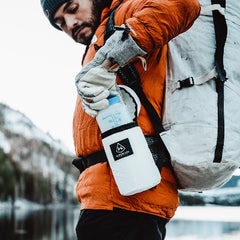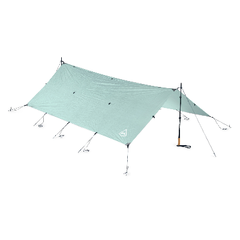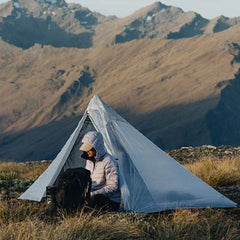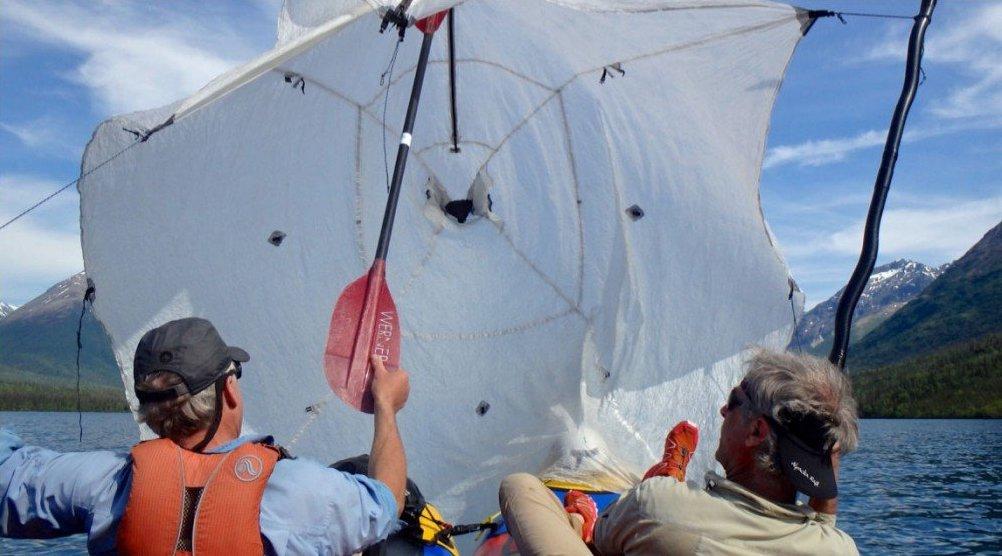Stripped Down With Guest Blogger Annie MacWilliams. This is the last in Annie’s blog series of thru-hiking tips & tricks for women.
Bring Your Brain: Really, most backpacking and thru hiking gear is gender neutral–tents, sleeping pads, cook gear, etc. But with each other these items, it’s important that you choose the right gear for you. Your brain is the best piece of gear you can bring, so know everything about your gear before you head out. Learn how to pitch your tent in different ways, in the worst conditions you can practice in. Anyone can pitch a tent in their grassy lawn on a sunny day, but a rocky hillside in sideways freezing rain? I failed that test on the Pacific Crest Trail and ended up getting a new tent shipped to me while on the trail. I needed my gear to work in the worst conditions, and user failure resulted in a very cold and wet night. Can you patch a leaky air mattress? Fix a zipper? Tweak a broken stove? If not, learn how.
Plan For Emergencies: In addition to gear knowledge, I strongly suggest anyone planning on extended wilderness travel look into a wilderness medicine course. A Wilderness First Aid (WFA), or Wilderness First Responder (WFR) course can be a great resource for learning how to save yourself or others in the backcountry. Knowing early warning signs for illnesses, as well as skills for handling emergencies can save your life or others. Once again, you have to bring your brain with you, might as well fill it with everything useful you can.
Use Light Shoes: One of the best perks of lightening up a pack is the ability to hike long distances in lightweight trail runners. I typically replace my shoes every 500 miles or so, when the foam is compressed to a point beyond saving and the tread is worn down. The best advice I can give for shoes is wait before buying multiple pairs if you’re unsure about that exact model. Companies often tweak small features like the lacing pattern or insole, and I have seen people leave trails because of stress fractures, tendonitis and even blisters. Hiking makes feet swell (hence the reason I use compression socks at night), and most hikers will have to adjust their shoe size up as their feet expand. Your feet are a critical part of any hike, so make sure you treat them kindly.
Blisters & Your Med Kit: As small as they can be, blisters can lead to huge problems, and need to be addressed immediately. I usually only carry a very small med kit when I hike, but I make sure I always have a blister remedy, even if that is only duct tape. The trick is to reduce friction, and tight shoes can be the culprit. I have taken a knife to my shoes before to modify them to relieve pressure and keep hiking until I picked up my next pair. I recommend this only as a last ditch effort. Other items I carry in my personal medicine kit are: Benadryl, Immodium, Ibuprofen, Vicodin, a spare lighter, super glue, sterile gauze, cloth tape, and an irrigation syringe. Many more items can be fashioned out of gear in an emergency situation, but that’s my standard kit.
I hope you’ve enjoyed my series. Thanks so much for following! If you have any questions, feel free to email the Hyperlite Mountain Gear team at info@hyperlitemountaingear.com.
The post Gone Light, Part IV: Bring Your Brain & Other Thru-Hiking Tips appeared first on Hyperlite Mountain Gear Blog.



















